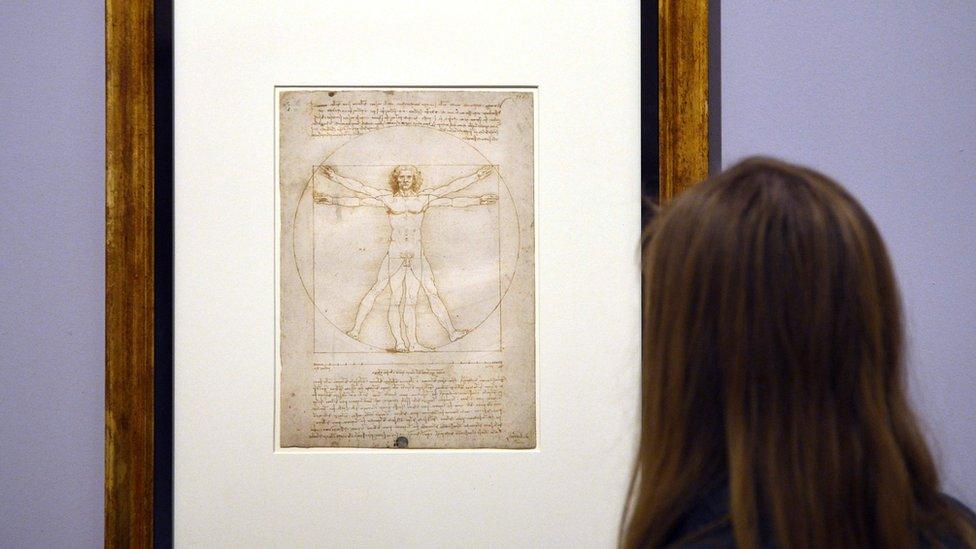Vitruvian Man: Da Vinci piece to go on display in Louvre
- Published

Vitruvian Man by Leonardo Da Vinci is stored in a climate controlled room and rarely displayed to the public
Leonardo da Vinci's famous Vitruvian Man is bound for Paris despite an attempt to ban it from leaving Italy.
The 500-year-old drawing was set to be transported to the Louvre for an exhibition marking the 500th anniversary of da Vinci's death.
But an Italian court had suspended the planned loan after non-profit group Italia Nostra (Our Italy) argued that the piece was too fragile to travel.
On Wednesday, judges decided the rare public display could go ahead.
The iconic drawing is usually kept in a climate-controlled room in the Accademia Gallery in Venice.
The piece is one of da Vinci's most famous works, and there are fears that its delicate nature ā it is drawn in ink on paper ā means it is at risk of lasting damage while on display.
In September, an agreement was made between Italy's culture ministry and the Louvre to temporarily swap works by da Vinci for works by Italian painter Raphael.
Italia Nostra, however, was concerned for the safety of Vitruvian Man. Italy's former nationalist government had also queried the loan, at a time of growing tensions between France and Italy over immigration.
The court concluded that the loan could go ahead, noting that other works , including The Fall of Phateon, a drawing by Michelangelo.
It added that the exhibition had "exceptional global relevance" and Italy wanted to "maximise its heritage potential."
The Vitruvian Man was based on the writings of the ancient Roman architect Vitruvius, who correlated the measurements and design of the human body into architecture.
Fewer than 20 da Vinci paintings are still in existence. Five of them are currently at the Louvre Museum, along with 22 drawings.
Da Vinci, who was born in 1452 in Italy, was a Renaissance painter, sculptor, architect and mathematician.
Why is the Vitruvian Man so iconic?
Dr Joanne Allen, senior professional lecturer at American University's Department of Art, told the “óĻó“«Ć½ that the Vitruvian Man is a "highly unusual drawing for Leonardo."
"It is a very well-finished pen-and-ink drawing completed to express a concise intellectual idea, not a sketch of a scientific observation or a preparatory drawing for a painting," she said.
Oxford University professor Martin Kemp describes why Da Vinci's works are so engaging
Dr Allen said that da Vinci based the image on a statement by the Roman architect Vitruvius, who believed the ideally proportioned human figure could fit into a circle and a square.
"Leonardo, however, scientifically adjusted the centre point of the circle away from the navel to ensure the whole scheme fitted together; this had not been done before in such a convincing way," she added.
"Leonardo utilized two perfect forms - the square and the circle - which had historically symbolized the earth and the heavens respectively, and placed man at the centre of all."
Dr Allen said the work's themes of perfection and unity make it one of the most important works of the Italian Renaissance.
- Published7 February 2018
- Published29 August 2013